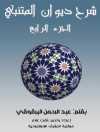Once upon a time there were good American novels and bad ones, but none was thought of as a work of art. The Novel Art tells the story of how, beginning with Henry James, this began to change. Examining the late-nineteenth century movement to elevate the status of the novel, its sources, paradoxes, and reverberations into the twentieth century, Mark Mc Gurl presents a more coherent and wide-ranging account of the development of American modernist fiction than ever before.
Moving deftly from James to Stephen Crane, Edith Wharton, Gertrude Stein, William Faulkner, Dashiell Hammett, and Djuna Barnes among others, Mc Gurl argues that what unifies this diverse group of ambitious writers is their agonized relation to a middling genre rarely included in discussions of the fine arts. He concludes that the new product, despite its authors’ desire to distinguish it from popular forms, never quite forsook the intimacy the genre had long cultivated with the common reader. Indeed, the ”art novel” sought status within the mass market, and among its prime strategies was a promotion of the mind as a source of value in an economy increasingly dependent on mental labor. Mc Gurl also shows how modernism’s obsessive interest in simple-mindedness revealed a continued concern with the masses even as it attempted to use this simplicity to produce a heightened sophistication of form. Masterfully argued and set in elegant prose, The Novel Art provides a rich new understanding of the fascinating road the American novel has taken from being an artless enterprise to an aesthetic one.
Om författaren
Mark Mc Gurl is Assistant Professor of English at UCLA.












